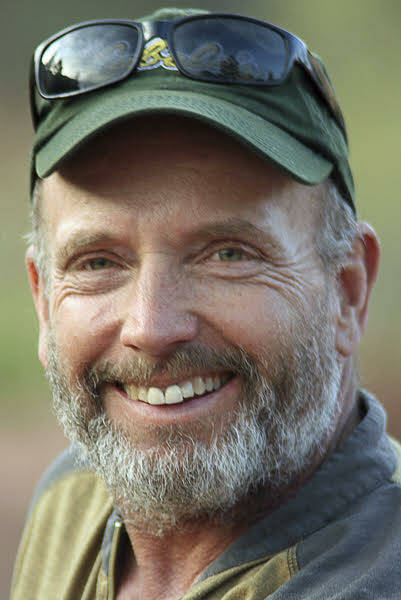By Taz Tally
While participating in the recent community discussions surrounding the inclusion of LGBTQ-oriented children’s books in the children’s section of the Homer Library, I heard several disparaging references made about drag queens and drag shows. My experience is that most people who make negative comments concerning the LGBTQ community members and lifestyles in general and drag queens and drag shows in particular, often do so out of ignorance but not necessarily malice.
Look I get it, I was raised to think that drag queens were, at the very least, really weird, probably morally suspect and very likely sexually deviant. I changed my perspective when I saw my first drag queen show in Montreal in 1964 … here’s my story …
Somehow my big brother Sid talked my parents into allowing, then 15-year-old me, to join him and his army buddies on a road trip from our home in New Hampshire across the Canadian border to Montreal, Quebec. While there, they decided it would be fun to go to a drag queen show. I’ve always been adventurous and curious, but this was truly going to be “bad boy” behavior. I remember being nervous about going to the drag show, because at the time I didn’t really know what “drag show” meant, but I was quite sure that we would be consorting with morally questionable people. However, I figured I was quite safe with my big brother and his friends. Some people in the audience were dressed and acted differently from us, others not so much, but nobody seemed particularly threatening. Everyone was eagerly anticipating the show. I can only imagine how big my eyes must’ve been when the first drag queens came out on stage. These were supposedly men, who were dressed up like women, although I was not sure why, and I really had no idea what they would be doing on stage.
I recall having many different thoughts and feelings that evening. I remember numerous times thinking to myself “Is that really a man? He/she really looks like a woman!” I remember that some of the performers were so convincingly female that I was sure that they were indeed women. That by itself was a real revelation for me. Then, once I moved on from the binary he/she questions of 1964, I also remember being absolutely riveted by their singing and dancing performances. I was stunned at how talented these performers were. I specifically remember one Diana Ross cover song that I’m quite sure would have made make Diana herself smile. I was also fascinated by all the makeup, costumes and jewelry, which I had normally associated with women only. One of my most imprinted memories of that night was how much fun all the performers and the audience members had during the show. It was so joyful and gleeful. After the show, we hung around to see if we could meet and talk with some of the performers. To my shock and amazement, chatting with the drag queen performers was just like, well, talking with anyone else. Another revelation!
I had a lot to process. I was brought up in a moderately strict Christian, heterosexual household. Back then, the word “queer” had a much different and far more derogatory, judgmental, and even accusatory, connotative meaning than it does today.
In the intervening decades — I am now in my 70s — I have attended numerous other drag shows and I have come to expect and appreciate creative and fun performances. I can best describe them as a cabaret show replete with gorgeous costumes, fantastic jewelry, stunning make-up and enormously creative and talented performances — again, quite simply, fun and joyous entertainment. And yes, some shows are more risque than others, just like shows with straight performers, and you can pick and choose what kinds of shows you like to see. But I can honestly tell you that if you want to laugh and smile a lot, and, as likely as not, sing-along, take in a drag show.
Since attending my first drag show many decades ago, I have had the opportunity to interact with and have become friends with a number of drag performers. I’ve come to understand quite clearly that drag performers are like all of us, they engage the same issues of life, love, joys and challenges. In my experience, drag performers are to be enjoyed and their talent and creativity celebrated, just like any other accomplished performer.
Some fun and interesting resources for your consideration:
Enjoy the movie “The Birdcage” featuring both touching and hilarious performances of Nathan Lane, Robin Williams and Hank Azaria.
Enjoy the movie “In & Out” featuring Kevin Kline, Tom Selleck and Joan Cusack (Kevin Kline practicing with his manly-man audio tapes is a hoot).
Look through the nursery rhyme children’s book “The Hips of the Drag Queen go Swish, Swish, Swish” for a quick visual-cartoon celebration of all the bling and performance fun of a drag show. Truly, it’s hard not to smile looking at this book.
Attend one or both of the upcoming drag performances being offered by Homer’s own drag performers Falcom Greear, Tony Stanfill and Shawnisty Weber at the following dates times and locations:
Feb. 5, 12 p.m. at Oden Meadery. Tickets online at www.odenmeadery.com.; Feb. 18, 9 p.m. at Alices, $10 at the door.
Drag has a long history. According to a www search I performed, one of the first recorded Drag Queen Balls was held in 1867 in New York, where men and women competed for the most gorgeous gown and feminine figure.
While not exactly the same, in that presumably most of the men were heterosexual, in ancient through modern times men were quite often made-up and dressed as women, when women were not available, or sadly, not allowed, to perform in theater.

